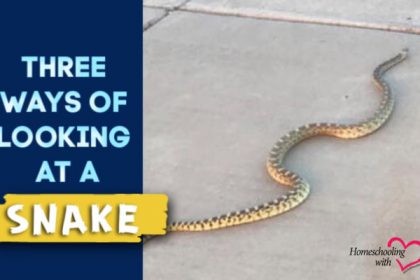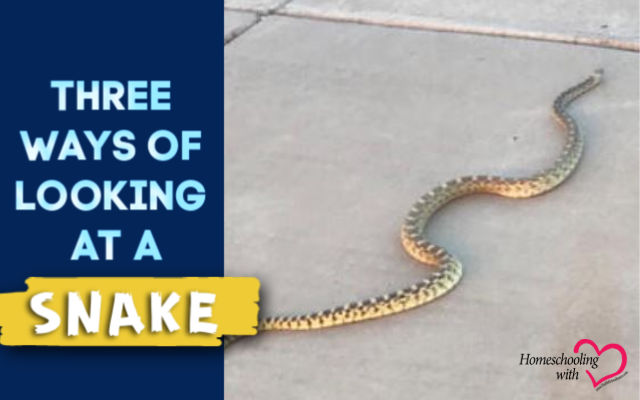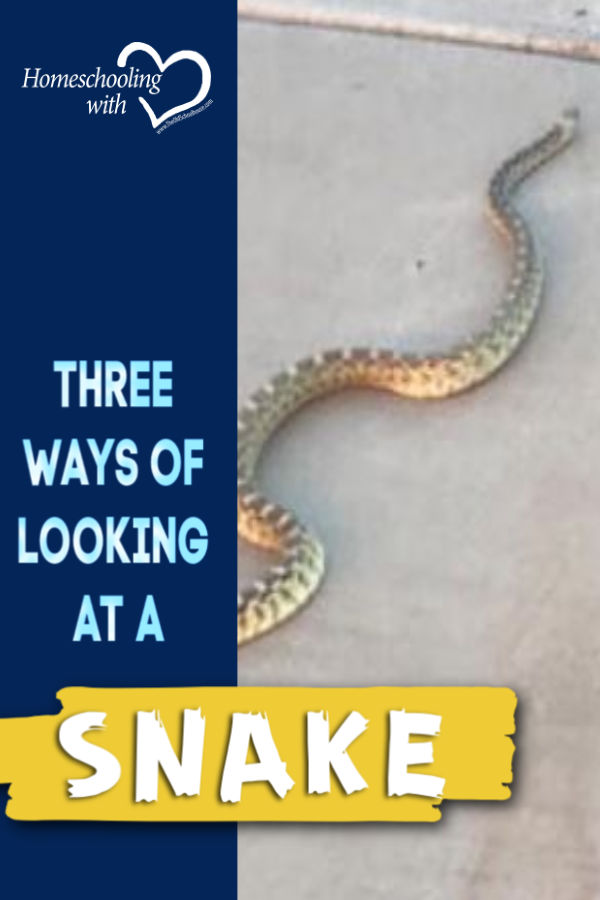Three Ways of Looking at a Snake


My older daughter, Rachelle, our family naturalist, continually brought home rescue animals. Her finds ranged from baby birds to a scorpion or stinging caterpillar. If she had been able to capture any of the mice that were plaguing us, she probably would have lobbied to keep them as pets.
One day she walked in, holding a 12-inch snake. I immediately had her put it down, and we secured it in a plastic tub. I cut a tiny hole, about a quarter of an inch across, in the lid. The next day, the high school biology teacher identified it as a harmless garter snake.
Before we could decide whether it would make a good pet, it vanished. It had escaped through the tiny breathing hole. Relieved that it wasn’t poisonous, we spent the next few weeks warily watching every step. We finally convinced ourselves it had escaped, and was happily slithering around the yard and consuming garden pests. On the plus side, we were never bothered by mice again.
Recently, I planned to go for a swim at our 55+ community pool. The residents usually enlivened the atmosphere with brightly-colored noodles and light-hearted chatter. This time I noted the conversation had a different tone: subdued and intense. Coming through the gate, I saw that no one was in the pool. They had congregated in the pool chairs on the patio.
I soon heard the story. Earlier, a large snake had slithered into the pool. Panic ensued, and the pool was emptied in record time. The biggest debate had been over whether to kill it. The snake, it turned out, was likely a harmless bull snake, but pool attendance dropped off significantly in the following days.

I was reminded of an earlier, quite different, reptilian encounter. While homeschooling my daughters, we joined several other families for a tour of a nature preserve near Dallas, Texas. As we strolled through the hiking trails, we noticed a clump of children from our group talking excitedly. Approaching cautiously, we learned the source of the excitement. A large, colorful snake was sunning itself under a bush. It was readily identified as a copperhead. Decidedly venomous.
The children were calmly analyzing and discussing their find.
“That head shape means it’s poisonous.”
“Notice the hourglass patterns on its back.”
“Technically, it’s Agkistrodon contortrix,” explained one of the older students. “This is a big one—almost three feet long.”
“If you smell something musty, you’d better move back.”
“It’s not usually aggressive if it’s been napping.”
They were keeping a respectful distance and talking in hushed tones. With all known facts exhausted, the group moved along the trail, looking for another of God’s fascinating treasures.
What a difference a bit of knowledge makes. Fear and uncertainty are replaced by an acceptance of God’s established order. Job 12:7-8 says we can learn from the animals, from the birds in the sky and the fish in the sea (author’s paraphrase).
Jeanette is a semi-retired college English and Spanish instructor and a published author and indie authorpreneur. She has helped over a dozen beginning writers take their project from idea to finished book. Now she is developing online courses and expanding her website and blog to take new authors from aspiring to avid. Declaring herself as “Chaplin by birth; chaplain at heart,” she also writes inspirational articles and blog posts, especially about the lives of Bible women.
Her blogs can be found at http://www.wordsareforever.com/ and https://chaplainesquethoughts.wordpress.com/













































